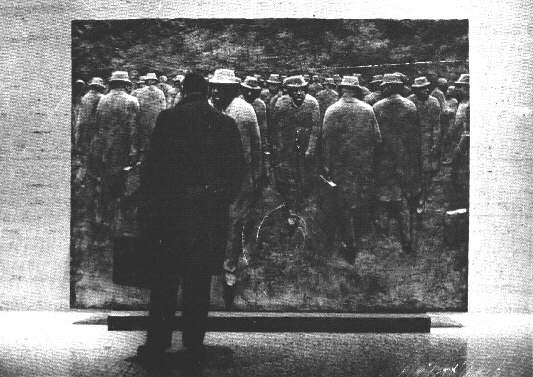

MATTHEW DARLINGTON
It was the age of Madame Blavatsky and the Hermetic Order of the Golden Dawn. It was also the age of Sigmund Freud and H.G. Wells. In the confusion that followed Darwin`s publication of `On The Origin Of Species...`, some looked for answers in the past, some in the future and some within the mind of man himself. It would be strange if the Transformationalists had ignored this quest for Truth, but stranger yet was their apparent reaction to it - the Hat. Whether it was an anagram or an acronym, a reference to an Ancient Egyptian temple or a facetious comment on the essential folly of mankind`s search for answers to non-existent questions, has never been satisfactorily explained. Neither is it known if Hammersley`s two literary works were the inspiration for the esoteric branch of the Transformationalists or merely an acknowledgement of its existence.
Matthew Darlington coined the phrase, `the transformationalistic effect`, and so he has gone down in history as the esoteric one, alongside the leader, the painter and the writer. But how far are we meant to take the transformationalistic effect seriously? Is it religion, philosophy or science? Just another term for Jung`s `synchronicity`, a coincidental concept? Or is it a proposed method to distort time and space? And why the Hat?
What are we to make of the curious footnote in Andrew Collins` "The Seventh Sword" (Arrow Books 1992, ISBN 0 09 988800 9)? This is a true story about psychic questing, involving the search to find the Seven Swords of Meonia. Parts of the book take place at Biddulph Grange (which lies just outside Stoke-on-Trent), and the history of the place, particularly around the turn of the century, provides several insights for the investigative team. The curious footnote refers to the following passage (page 68):
"Those groups and individuals who have fought for the cause of Meonia have always been opposed by an equal and opposite force whose organizations have permeated themselves into every facet of society throughout Europe. They operate as wheels within wheels, tiny but powerful cogs turning and operating other much larger concerns, a process which is reflected in the name they have used since the fall of the Templars. For they are known simply as the Wheel."
And the footnote (page654):
"Only the most basic details concerning the Wheel`s alleged existence were given during the hypnosis session, and at no time was the term `the Wheel` actually used. This title was not announced until Graham scribbled it down in his psychic notes during January 1981. However, I felt that the name should be used right from the beginning of the book when referring to Meonia`s alleged adversary. Until the Wheel was first mentioned by name, we referred to this organization as `the opposite side` or as `Hat`, after an amusing misconception which need not be quoted here."
So was the transcendental wing of the Transformationalists a force for evil whose ancestry could be traced back to the Knights Templars, or was it just `an amusing misconception`?
Should we simply accept Hammersley`s remark - "Religion? That`s daft, that is." - and apply it to everything of a spiritual nature? Or can we wonder why, when researching the Transformationalists, the postcard below fell out of some unrelated material and landed at my feet?

And now that postcards have been mentioned, it is inevitable that the strange phenomenon of the Transformationalist Postcards should be admitted as ongoing evidence of Darlington`s `transformationalistic effect`.
Matthew Darlington came from Manchester and worked down the pit. Of the four founder members of the Transformationalists in the photograph, he is the only one wearing a hat.

Back